 We sit down with two of Sony’s senior people; one from network music services, the other personal audio; and explore where Sony are with their digital music – content & players – and what their moves will be to recapture their previous crown.
We sit down with two of Sony’s senior people; one from network music services, the other personal audio; and explore where Sony are with their digital music – content & players – and what their moves will be to recapture their previous crown.
StreamMan services is that people are listening on the mobile phone and in the morning and in the afternoon and then you see this very strong usage pattern during the working hours in the morning and people are clearly listening to StreamMan over the PC in the office. And Gregory was talking about people streaming music within the home environment so I think what we will see is some of the personalisation aspects of StreamMan brought into the home environment.
We are definitely working on how we blend the technologies that power them. Since we started out with two services at the same time, what I’d said was “Let’s let them develop independently first and then we will take the technologies that underlie each and make the best combined service offering at the appropriate moment.”
I think that there is an obvious opportunity within Connect to offer some kind of streaming, some sort of Connect radio service. The user interface of the mobile phone is very simple, it is so small that the like/dislike functionality of the Stream Man. Intriguingly the other environment that would really benefit from that is if you are doing it on your home theatre. Because the television is a sit back device and not a lean forward device; in the middle ground where you are sitting at your PC making your play list, researching the artists, doing this, doing that. I am not sure that the sheer simplicity of the like/dislike is the right way to go. It is a much more passive environment and lo and behold we see people listening to Stream Man in the office. So we are still in the early days of experimenting but in terms of digital lifestyles what we have got to find is what do people want to do, in which circumstance and then make either a combined service offering or separate service offerings depending on what they want. The most important thing for us at the beginning was to develop the services, get them out into the market then we would be able to learn about how people want to use them and then we will be able to package the different solutions according to different market segments.
It is still early days. It is very exciting to have both projects under the same roof.
DL: And with the Stream Man where you say people are streaming the content as they are travelling are they? On the mobiles?
RA: Let’s imagine on the way to work – the journey to work listening to your favourite channel, getting to the office, listening to your channel in the office and later on in the afternoon you are back out and about and have your mobile with you, maybe create a new channel or re-edit an old one or something. It is very clear that there is this office listening pattern.
DL: When they are portable they have got some bundle deal where they are not paying for the GPRS? or how does that work to make it economically viable for the user?
RA: Actually that is one of the challenges in the Finnish market because in Finland by law you are not allowed to subsidise the handset; you have to price the data separately from the service so it is a little bit clumsy from the user point of view. We haven’t been able to do much bundle offering a little promotional stuff.
When we rollout in other environments and we are not subject to those legal constraints then the obvious thing to do is offer different packages that offer you so many hours of mobile, unlimited web, included data charges, just a simple pricing structure. So you can imagine a five, ten, fifty Euro package that gives you different amounts of each. Our market research clearly indicates that that is what people want and we would have done that in the pilot market if we were allowed to, but, they legislate against that.
DL: That bundle idea is quite interesting we are looking at Napster To Go which I have got a moral objection to the idea of not owning the content. But maybe that is a generational thing, I don’t know. I am not looking for an answer as to whether it is right or wrong, but when I was sent a review (version of Napster To Go) a few months ago and the courier arrived at 4.00 in the afternoon, I had plans for the evening. As it turned out, I completely wiped out the plans I had for the evening and spent five/six hours on Napster To Go downloading stuff, because it was like being on the original Napster again. In those days of you know the passion of discovering new music and being able to play around with it. Is that the way you see Connect service going as well? Having it all in price for access to content?
RA: I don’t want to speculate about what we might and might not launch, but, it is very obvious that once you have got the delivery engine and if you have got people interested in discovering music in that way then we have got to look at it.
DL: And ATRAC3 is able to limit the amount of the time that the content can be on a device.
RA: No that comes through the digital rights management system.
DL: So ATRAC3 doesn’t . . . . .
RA: ATRAC3 is just a compression CoDec. The open MagicGate the digital rights management system – the new digital rights management system we are calling MARLIN, it is part of the Coral consortium and will . . .
DL: I see an ocean theme coming here . . .
RA: Yes it is, and every member of the Coral consortium will launch its own DRM system but it will be compatible and work with common standards. And that is what consumers want. They want to know that if they buy something here, they can use it there and we are working towards. Now one of the things that obviously we need to do is to be able to do timed out content and at the moment Open MagicGate can’t do timed out content.
There was a time and you mentioned it that you had moral objections to not owning the music and people do still look at it like that and timed out was an unpopular concept. But when you begin to look at the other way and say “Hey, look what I can do!” and then it becomes quite convenient. So there is this big debate going on “Do people really want to own ones and zeros or do they want access to ones and zeros?”
DL: What is the answer?
RA: I don’t know. Actually the answer is both. The answer is that some people want to buy and some people will want to have access. We shall see.
I think that the key thing is to offer ease of use, high quality, security and Connect certainly does that.
DL: Good. The EPG I think is a fascinating area. Talking to the Project Manager of the Digital TV trial down in Wales; I am sure you have been keeping an eye on that where they switched off a small area of Wales and converted everyone over to digital receivers. He was saying that one of the interesting things that has come out there is the variations of EPGs and how when you start to have lots of products as we have spoken about already in a digital era, one way to differentiate is through the strength of the interface. What are you doing on that front?
RA: I am not really in a position to talk about our plans there. Let me just say that I couldn’t not agree with you more. I think that it is vital dimension when we start getting into digital television because we go, not only does digital television add a dimension to the quality and picture, it also adds . . . . . .
DL: Hopefuly, not always.
RA: It can, if by Sony.
DL: (laughs) It depends on the broadcaster as well.
RA: I understand, but it has the potential and certainly my experience of it was a much more stable and brighter picture. But you really begin to get into the question of “What information can I get and what can I do with my programming?” Particularly when you add DVD recorders or personal video recorders and then you can bring this utility of time-shifting programming; creating your own personalised channels; getting alerts; programming remotely, learning about something and saying “Oh I forgot to programme that” and going to your mobile phone .. . . that there is a whole new world that is beginning to open up and I think that it is going to be a very important consumer expectation in the future.
Now exactly how we do that and all the rest of it I am not quite yet in a position to discuss to your listeners, but really, very, very important in the future.
DL: One of the things that has become clear to me here is Sony’s focus on the “cross media bar” across devices. We say it on the PSP on the train; we have seen it on the Qualia devices as well. That seems like something that is EPG but a source-based EPG if you like – you have got have some way of navigating – we are talking about Digital TV and channels now but obviously, we are looking a few years ahead, we are not talking about channels we are talking about many, many sources of content. In an infinite sea of content how the heck do you know what to watch?
RA: We should reverse roles here.
I wish you would reverse roles here because that is one of the things that motivates us in all of this because, it is not just your broadcast content, it is going to be your own personal media; it is going to be your stored files; it is going to be your package media and it is also going to be the media that you will access through IP TV because people will begin to see a blend of programme content and search-based content. And I don’t think that people necessarily want on the TV interface to do the kind of lean forward keyword search basis thing that you do on the PC. We have to think on new protocols of search and that is where we get back to some of the things that we are doing with StreamMan.
The whole idea of that is that you choose according to mood and context. We are just at the very, very beginning of developing a new way of thinking about how you entertain yourself. You can see this if you look through some of the channels on StreamMan, Music for Drivers, you know, party music, relaxing music and then you get a chance to personalise. We are beginning to research “How do you bring that thought process to video and does that provide a new protocol how people get their entertainment?” Because you are certainly going to look at your EPG and see what is on and what are people showing me, maybe I am not interested in that, let’s watch something funny. We are doing a lot of work in that area right now but how do you develop that kind of access to entertainment content and give it the sheer simplicity of the StreamMan interface on the mobile phone. And it is this curious paradox of the very large screen, which is a lean back experience. and the tiny screen of the mobile experience have a lot in common in that people don’t want to have that intensive, you know, you said you spent the evening with your Napster ToGo because you are discovering, your are clicking and you are making playlists and you are looking at the artists, you are remembering “Oh gosh I haven’t heard that for ages, haven’t heard that for ages”, and you make it all up. That is a very intensive interactive experience. It is not how people relate to television, nor to their mobile phone. So we are doing a lot of work in that area and in terms of digital lifestyle, that is exactly where we are going.
DL: Interesting on the Napster To Go having spent those five hours, I haven’t subsequently used the service. There is that completely intense experience and then “Right OK, well I have got the rest of my life to live now”. So you do have to have – for an ongoing basis of tuning on content, it has to be a much more relaxed attitude.
RA: Try this like/dislike – it works but the whole idea and the very foundation of the networks services business that I run across the board, is that you have got the great products; you have got what the network can do for you and now how do you imagine new things you can do with the products; new dimensions for competing and it is all about ease of use and entertainment functionality. This is where Sony as an entertainment brand really begins to come to the fore. This is how we think and this is what we do.
We are really, really confident – we have only just begun to see the beginnings of change in this. We are going to look back in a few years and say “How clunky; how mechanical; how linear”, because now it is so much easier, so much non-linear, so much more mood and entertainment based and so much easier.
DL: That is interesting that mood based stuff. I was talking to somebody else, I can’t remember who it was, and it was exactly that idea that music is to do with moods. It is quite interesting because they had launched in a certain way and that had been successful for them but then they realised that the mood is really what people listen to. It was MTV and Hell you would think they would understand that from the word go and it is only now that they are starting to change their programming.
RA: In fact I am going to a lecture this evening in London at the Royal Institution called “Swan Songs” and it is about the relationship between music and Alzheimer. People have been using music to try to unlock . . . .
DL: Right, because it is so central to the way that people are . . . . .
RA: Exactly and they start out – there is a project there called “Song Trees” where it is a cross-generational questionnaire with grandchildren being asked to go to their grandparents and say “What was the first song that you remember? What was the first song on the radio that you listened to? Can you remember how you felt about it at the time? What was the context?” And lo and behold it is mood and situation. I came across this with a Professor of Music there of the University of Sussex actually and I showed him the StreamMan interface and he nearly fell off his chair and he said “You have no idea how powerful what you are doing is”. And we started discussing and that is why he invites me to this thing at the Royal Institution this evening and what I unlocked is twenty years of medical research into this; understanding how the brain actually processes auditory signals and the impact that music can have. So we’ve taken the lid of this subject and it’s absolutely fascinating, absolutely.
DL: Good. On the final question, because you have been very generous and given me a lot of time, I will be quick.
With the music players, one thing that – I went through a stage of being a little too obsessed with recording stuff, audio, I mean, I am recording now but you can understand why I am doing that. But this idea of recording conversations with people and I won’t get into the privacy discussion because I think that is quite another question and it’s nothing to do with manufacturers – a change in moral code maybe. But I notice that the new player doesn’t have the record ability on there.
GK: Our products, both hard disc and Flash memory-based devices don’t include an encoder, so you can’t record digitally with it.
DL: And what is the reason behind that?
RA: There are two reasons. We cover two other segments of the market which are extremely key for us, and a pure digital recording function which is Minidisc and what we call IC devices using also a chip but purely for dictation function and we have got other plans for the future.
DL: So sit and wait. Interestingly I have had one of these (Sony k750i) on loan while I am here, what is this, the 750 or I am not sure what it is called but it has audio recording in it as well. So whether it is actually going to mould into the mobile phone as an audio recorder; the quality you get from this isn’t quite what you are getting from 128 (kbps) . . .
RA: You get it on all the phones today, mostly. What you need to look at also I think is – there are lots of brands like Samsung, for example, or iRiver, Creative, etc who have the encoding function as granted, it is not necessarily coming from a real consumer demand. Because if you look at the young target for example which present today more than 60% of the volumes . They buy a Flash memory player or they buy a Hard disc or they buy an iPod or whatever, because they want to listen to music, so encoding function can be good for certain population At the same time we believe that encoding function needs also to deliver a very high level of sound quality and for this we believe that Minidisc is today the best digital recording device that is on the market.
It’s the only one to have, for example, to have linear PCM function . . . .
DL: My view is that people are enjoying receiving media at the moment – where it becomes really exciting is where they are generating it themselves. User generated content, I think, is an area you can’t ignore.
RA: I am not saying that we won’t do it, but just not yet.
DL: Great. Thank you both for your time.
Recording of the interview (38Mb) (41 min)
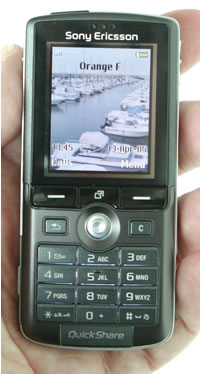 About a month ago I had the chance to spend two days with a pre-release version of the Sony K750i handset and as it’s now closer to the release of the handset, I thought an overview of the product might be timely.
About a month ago I had the chance to spend two days with a pre-release version of the Sony K750i handset and as it’s now closer to the release of the handset, I thought an overview of the product might be timely.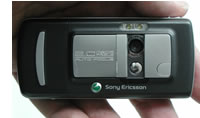 You morph it in to a camera by sliding the lens cover at the back of the device. Using the 2mpx camera you can easily captures clear pictures with vivid colours during light days.
You morph it in to a camera by sliding the lens cover at the back of the device. Using the 2mpx camera you can easily captures clear pictures with vivid colours during light days. Video recording is OK, given the devices restrictions.
Video recording is OK, given the devices restrictions.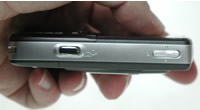 I’d just assumed the K750i would have a ‘normal’ headphone jack, letting me choose the headphones that excited me, but the provided headphones had to be connected via a Sony-interface at the bottom of the phone. This brings obvious advantages, like them having a mic, letting to let you use them as a hands-free set.
I’d just assumed the K750i would have a ‘normal’ headphone jack, letting me choose the headphones that excited me, but the provided headphones had to be connected via a Sony-interface at the bottom of the phone. This brings obvious advantages, like them having a mic, letting to let you use them as a hands-free set.![]()
![]()
 Vodafone execs spent the morning cackling wildly to themselves, throwing wads of dollar bills in the air and rolling around silk-covered beds covered in cash as record revenues and profits for its full year results were announced to the world.
Vodafone execs spent the morning cackling wildly to themselves, throwing wads of dollar bills in the air and rolling around silk-covered beds covered in cash as record revenues and profits for its full year results were announced to the world. But in-between triumphant licks of triple-thick Cornish clotted cream, Sarin sounded a cautious note, warning that competition was rising.
But in-between triumphant licks of triple-thick Cornish clotted cream, Sarin sounded a cautious note, warning that competition was rising.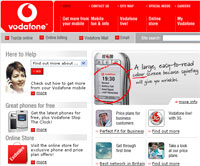 Vodafone performed particularly well in strong markets such as the US and Spain, with revenues growing at more than 20% year on year.
Vodafone performed particularly well in strong markets such as the US and Spain, with revenues growing at more than 20% year on year. Orange has triumphed in a study rating customer satisfaction among mobile phone contract providers, with Virgin Mobile coming in top in the pre-pay sector, according to the 2005 UK Mobile Telephone Customer Satisfaction Study, run by J.D. Power and Associates.
Orange has triumphed in a study rating customer satisfaction among mobile phone contract providers, with Virgin Mobile coming in top in the pre-pay sector, according to the 2005 UK Mobile Telephone Customer Satisfaction Study, run by J.D. Power and Associates. The authors of the study claim that the results reflect the positive impact of increasing competition and lower tariffs.
The authors of the study claim that the results reflect the positive impact of increasing competition and lower tariffs.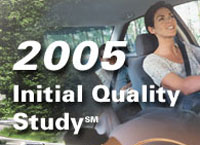 The contract segment seemed a well-chuffed bunch too, with satisfaction levels rising to 733 index points from 720 index points in 2004.
The contract segment seemed a well-chuffed bunch too, with satisfaction levels rising to 733 index points from 720 index points in 2004. Mobile technology and photo messaging is still a hot potato, with 35 percent of all mobile owners snapping on camera phones and 21 percent sending photos from their mobiles.
Mobile technology and photo messaging is still a hot potato, with 35 percent of all mobile owners snapping on camera phones and 21 percent sending photos from their mobiles.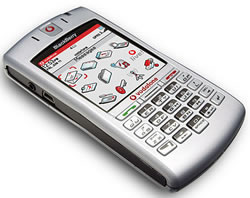 Part
Part 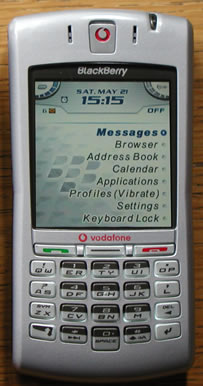 Screen
Screen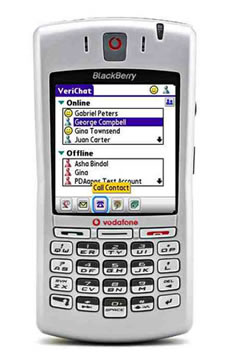 When Web pages are rendered, there are a lot of unnecessary images which would be represented instead by text. This text is usually shown in the ALT tags of the HTML from which the pages are rendered. On a lot of sites, there are a lot of navigation images, which are not good for render time on a low-powered device like the Blackberry: every time a page is opened containing images, these images are downloaded (this takes a long time with the Internet connection on a 7100v being at dial-up speeds). When downloaded these images are resized individually so as to fit on its screen.
When Web pages are rendered, there are a lot of unnecessary images which would be represented instead by text. This text is usually shown in the ALT tags of the HTML from which the pages are rendered. On a lot of sites, there are a lot of navigation images, which are not good for render time on a low-powered device like the Blackberry: every time a page is opened containing images, these images are downloaded (this takes a long time with the Internet connection on a 7100v being at dial-up speeds). When downloaded these images are resized individually so as to fit on its screen.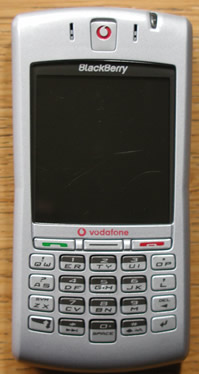 Being a self-professed gadget lover, I tend to get new toys as they come out. One particular gadget, however, escaped my grasp: I’d heard about it – all about how it was the oh-so-great new fashion for business users, and about how it was transforming people’s lives (and phone bills too as it happens). You might already have guessed what it is that I’m talking about: The Blackberry.
Being a self-professed gadget lover, I tend to get new toys as they come out. One particular gadget, however, escaped my grasp: I’d heard about it – all about how it was the oh-so-great new fashion for business users, and about how it was transforming people’s lives (and phone bills too as it happens). You might already have guessed what it is that I’m talking about: The Blackberry. Blackberry and Nokia 6630 side-by-side (Blackberry on the right)
Blackberry and Nokia 6630 side-by-side (Blackberry on the right)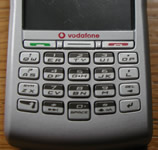 Keyboard
Keyboard Scroll wheel
Scroll wheel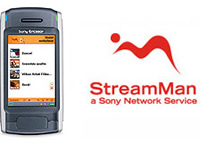 We sit down with two of Sony’s senior people; one from network music services, the other personal audio; and explore where Sony are with their digital music – content & players – and what their moves will be to recapture their previous crown.
We sit down with two of Sony’s senior people; one from network music services, the other personal audio; and explore where Sony are with their digital music – content & players – and what their moves will be to recapture their previous crown.  Poor old granny. All she wants to do is ring up a cab to take her home from the bingo, but her hi-tech, Bluetooth enabled, all-vibrating, MP3-playing, camera-toting, WAP-enabled phone is trying to get her to download the latest Blink 182 ringtone and asking for her GSM details.
Poor old granny. All she wants to do is ring up a cab to take her home from the bingo, but her hi-tech, Bluetooth enabled, all-vibrating, MP3-playing, camera-toting, WAP-enabled phone is trying to get her to download the latest Blink 182 ringtone and asking for her GSM details.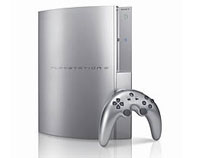 Games:
Games: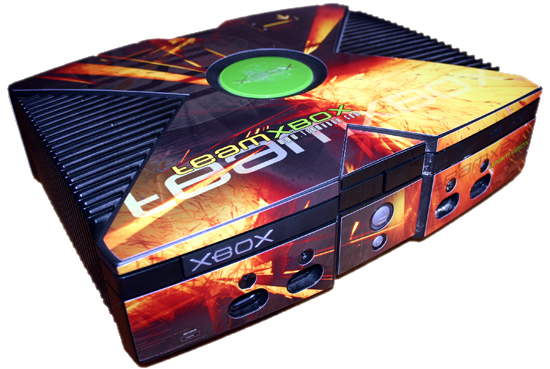 I don’t currently own an Xbox, but I have been quite a fan of Sony’s Playstation for a while: I had two of the original Playstations, PS1 and PS2 for various reasons. You might’ve thought that I would’ve been looking forward to the
I don’t currently own an Xbox, but I have been quite a fan of Sony’s Playstation for a while: I had two of the original Playstations, PS1 and PS2 for various reasons. You might’ve thought that I would’ve been looking forward to the 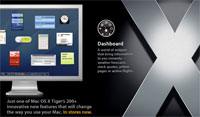 Just 17 days after releasing its ‘Tiger’ OS X 10.4 operating system, Apple has issued a sizeable bug fix update after growing gripes from customers.
Just 17 days after releasing its ‘Tiger’ OS X 10.4 operating system, Apple has issued a sizeable bug fix update after growing gripes from customers. Russians were also most annoyedski to find the iDVD player bombing when the operating system was set to their home language (something that affected a host of other languages too).
Russians were also most annoyedski to find the iDVD player bombing when the operating system was set to their home language (something that affected a host of other languages too).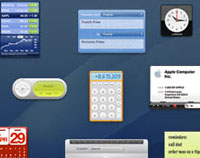 “A lot of things [at Apple] are pretty secretive; there aren’t necessarily as many eyes looking over the products as there could be,” said Wilcox, commenting on the company’s decision to use a limited group of beta testers looking at the code.
“A lot of things [at Apple] are pretty secretive; there aren’t necessarily as many eyes looking over the products as there could be,” said Wilcox, commenting on the company’s decision to use a limited group of beta testers looking at the code.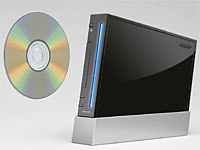 After the high profile launches of
After the high profile launches of 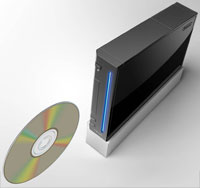 A few facts did emerge: the Revolution will come with 512MB of internal RAM, an IBM CPU, ATi GPU, an SD slot, built-in WiFi, wireless controllers and a selection of USB2 ports.
A few facts did emerge: the Revolution will come with 512MB of internal RAM, an IBM CPU, ATi GPU, an SD slot, built-in WiFi, wireless controllers and a selection of USB2 ports.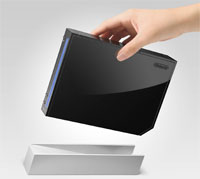 Nintendo’s new machine will be their first console capable of playing standard storage DVDs, but they haven’t forgotten their old-school fans, with the Revolution able to accept Ye Olde Gamecube discs.
Nintendo’s new machine will be their first console capable of playing standard storage DVDs, but they haven’t forgotten their old-school fans, with the Revolution able to accept Ye Olde Gamecube discs.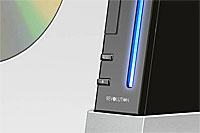 Rumours persist that Nintendo may have a surprise up their sleeve for the end of the expo, but so far reaction to their presentation seems a little muted.
Rumours persist that Nintendo may have a surprise up their sleeve for the end of the expo, but so far reaction to their presentation seems a little muted.